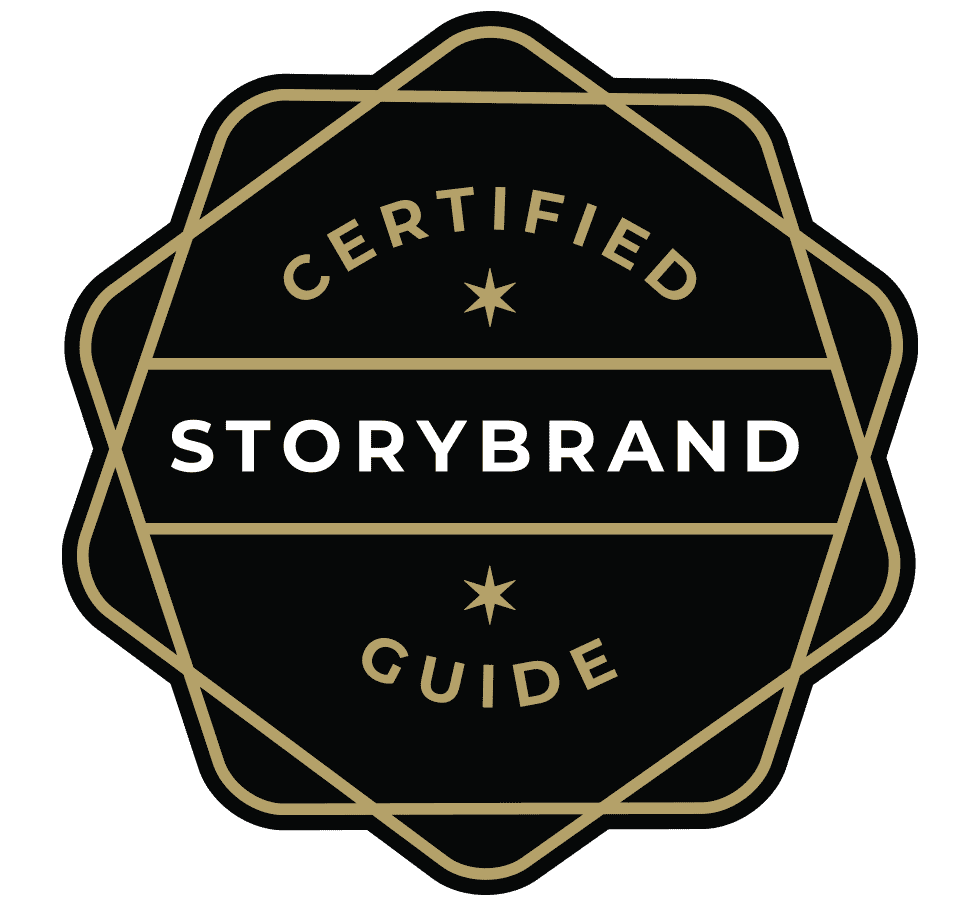StoryBrand Website for Artists
Jul 29, 2022
So often, artists – whether those in the performing or fine arts – will dismiss the StoryBrand framework. “It’s for plumbers and accountants,” a concert pianist told me. “Not for us.” And, indeed, it does take a bit of finesse to work the principles of this framework into a website for an artist. But as a StoryBrand guide and arts marketer, I’ve worked with dozens of brands in the arts space. I’ve learned a few adjustments to ensure that even a website for a company in the arts can help an audience understand what you do, how it makes their lives better, and how they can get it.
When websites get this right, artists are able to not only sell their work or get more gigs, but they are able to build a community that is hungry for their upcoming projects. The StoryBrand framework provides a clearer picture and audience-focused approach than most website templates will offer. Even though it takes a bit of tweaking, the output is worth it in the long run. Let’s first look at what messaging adjustments need to be made.
Tweak #1 – The Problem
The first issue most artists bump up against when it comes to applying the StoryBrand framework to their website is the “problem” section. Often the “problem” section is at the very top of the home page. With this prime real estate, it’s important to capture your audience’s attention and “invite them into a story” as Donald Miller says in his book, Building a StoryBrand. If you are a painter and want to sell your pieces, what problem that your work solves? The customers’ walls are too empty?
When I’m working on messaging for an arts-based brand and a clear problem doesn’t show itself, then I like to redirect the thinking with a paradigm shift. For example, “most people think that buying art for your home has to go through your interior designer.” When you frame the problem this way – that you are overcoming a preconceived notion about the art form – it becomes much easier to address to problem and the feelings that it arises.
ProTip: The Problem your customer may be facing is a limiting belief about your art form.
Tweak #2 – The Character Want, Using Reviews
Traditionally, in the StoryBrand framework, reviews and testimonials are saved for the Guide section of the site. Which often is further down the homepage.
Many performing arts-based brands, though, can use reviews in other areas of their BrandScripts – like the character want section. In this section, your goal is to identify something that your audience may desire – and something that you can, of course, supply. If you were to StoryBrand the website for the hit Broadway show Six you might include right at the top the New York Times Review that states, “the place to be if you’re looking for a sextet of truly empowered, empowering megastars.” I mean, the want is right there.
ProTip: Arts-based brands can use reviews throughout their websites, not just in the “Guide” section.
Must Have Message #1 – The Plan
Please allow people to give you money. I often have to tweet this when I come across arts patron who are having trouble buying tickets, members, or subscriptions. The process is not always easy and people need to be walked through it. Be sure to include a plan so your audience knows how to do business with you.
Must Have Message #2 – The CTA
This is another one of the StoryBrand Framework messages that gets overlooked (is it because of self sabotage? I am not sure, that’s between the artists and their therapists). What I do know is that CTAs are few and far between on artists’ websites and that has to change. Your work deserves to be seen and clear calls to action help make that possible. Do not try to put all of your socials in the upper right corner of your website. Instead, give a clear, succinct call to action so that your audience is able to support you and the work that you do.
At first glance, the StoryBrand framework does not seem compatible with the arts. Some minor adjustments and a few must-haves can transform how your work is presented. By understanding how to tweak certain elements, your work can go from seeming like a nice hobby, to a fully fleshed out business. (And revenue will reflect that too) A website created using the StoryBrand framework has been proven to work for thousands of arts-based businesses. The key is partnering with a StoryBrand Guide and an agency that specializes in applying this framework to what you create.
Ready to explore how StoryBrand can help form your new website? Let’s talk.
Share:

StoryBrand Websites
to help your business grow

The Internet is Open
How to Get More Sales with a Marketing Funnel
Your business deserves to be around for the long haul.
That’s why we created this guide. Get more sales with a strong marketing funnel. We’ll show you how.
